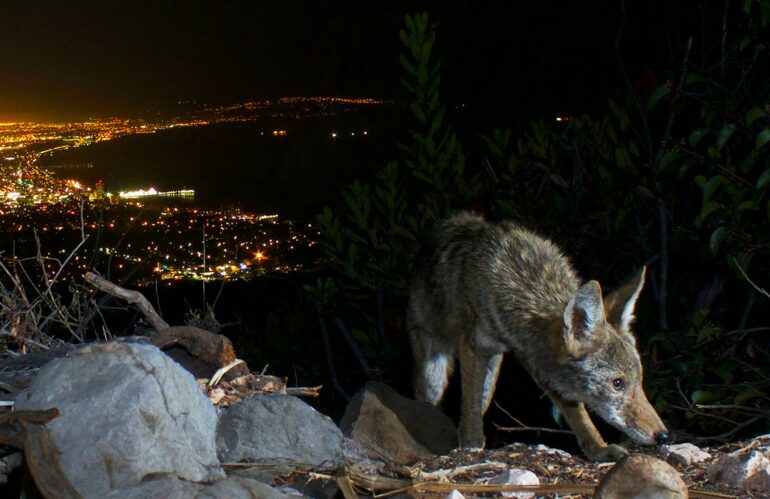A video showing a close encounter between a hiker in Utah and a mountain lion defending her cubs went viral in 2020. The video, during which the hiker remained calm as the mountain lion followed him for several minutes, served as a visceral reminder that sharing the land with carnivores can be a complicated affair.
For conservation scientists like me, it also underscored that Americans have a fraught relationship with large carnivores like wolves, bears and mountain lions. My colleagues and I have proposed a federal policy that, when combined with other initiatives, could allow for sustainable coexistence between people and carnivores.
In a 2020 viral video, a Utah hiker encounters a mountain lion on the trail. Warning – strong language.
Major state and federal government efforts are underway to reintroduce grizzly bears to the Northern Cascades and gray wolves to Colorado. These are places where stable populations of these animals have not roamed for many decades.
More human development and, in some cases, expanding carnivore populations have led to more encounters between humans and carnivores. Coyote attacks on pets are more common, alligator bites are on the rise in some regions, and the killing of livestock by wolves has spread.
Increasing conflict with these species may unravel decades of conservation success.
From conflict to coexistence
To manage these risks, people too often default to the widespread killing of carnivores. In 2021 alone, the U.S. Department of Agriculture Wildlife Services euthanized nearly 70,000 bears, wolves, mountain lions, bobcats, coyotes and foxes.
In the same year, controversial laws passed in Idaho and Montana that substantially reduced wolf numbers because people perceive these animals as risks to livestock production and game species hunting.
Thousands of animals die every year in wildlife killing contests that often target carnivores such as coyotes and bobcats. These contests are legal in more than 40 U.S. states – under the guise that they help with wildlife management and protect livestock.
But research has found that extensive carnivore killing to reduce levels of conflict is largely ineffective, ethically tenuous, and it undermines their conservation.
Instead, coexisting with carnivores can benefit both carnivores and people. For example, the presence of wolves and mountain lions lowers the frequency of vehicle collisions with deer, saving money and human lives. Foxes, likewise, reduce an abundance of small mammals that carry ticks, likely reducing cases of Lyme disease in humans. Sea otters maintain healthy kelp forests that support tourism and fisheries and capture carbon.

Many carnivores’ presence on the landscape benefits people. Foxes, for example, eat rodents that may carry Lyme disease.
AP Photo/Andrew Harnik
However, the U.S. has no unified approach for…



